What is food safety?
Food safety is the study and practice of protecting the public from any harmful effects of the production and consumption of food. It includes the study of physical, chemical, and biological hazards that can contaminate food, the study of how food can be adulterated, how to measure the risk posed by those hazards, and how to minimize the risk.
Tips to Maintain Food Safety- A Guide to Keeping Your Family Safe
What is food safety?
Food safety refers to food preparation, handling, and storage measures that are intended to prevent foodborne illness and injury by following the food safety guidelines.
Basic food safety and sanitation are important as food products may come into contact with a range of health hazards during their journey from farm to factory to fork. Safe food handling methods and procedures are used at every level of the food production life cycle to reduce these threats and safeguard customers.
Food safety is a scientific field that involves chemistry, microbiology, and engineering, among other academic disciplines. These several schools of thought work together to ensure food processing safety regardless of where food is obtained, processed, stored, or marketed. According to this perspective, food safety is a holistic approach to hygiene and accountability that embraces all components of the global food system.
Food safety charts
Food is considered adequately cooked when it has been heated for a long enough period of time and at a high enough temperature to destroy the dangerous germs that cause foodborne illness. When food is stored properly, food quality is preserved, and rotting and food illness are avoided. Learn how to properly cook and preserve your food by using the simple food safety tips.
Foodborne illness is a major issue in the world today
ZipChecklist’s guide will show you how to keep your family safe from foodborne illnesses by following these easy steps
Safe minimum internal temperatures
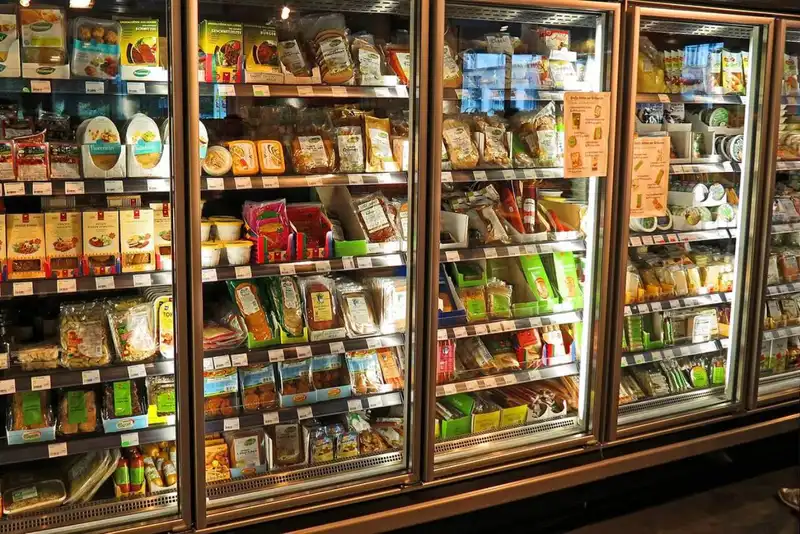
For safe food safety temps (minimum internal temperatures) and rest time for meat, poultry, fish, and other cooked items, follow the standards below. Use a food thermometer to see if the meat has reached a safe minimum internal temperature, which is hot enough to destroy hazardous bacteria that can cause food poisoning.
- Beef, hog, veal, and lamb should be cooked to an internal temperature of 160 degrees Fahrenheit, while turkey and chicken should be cooked to a temperature of 165 degrees Fahrenheit.
- Steaks, roasts, and chops should be rested for 3 minutes and cooked to an internal temperature of 145 Fahrenheit.
- The internal temperature of all poultry (breasts, whole bird, legs, thighs, wings, ground poultry, giblets, and stuffing) should be 165 Fahrenheit.
- At 145 degrees Fahrenheit, fresh pork, including fresh ham, should rest for 3 minutes.
- Internal temperature of precooked ham to reheat (hams packed at USDA-inspected plants to 140 degrees Fahrenheit) should be 165 degrees Fahrenheit.
- Cook eggs until the yolk and white are firm. Egg dishes such as frittatas and quiches should be cooked at 160 degrees Fahrenheit.
- 165 degrees Fahrenheit is the ideal temperature for leftovers and casseroles.
- Cook until the flesh is opaque and separates readily with a fork, or fish with fins at 145 degrees Fahrenheit.
- Cook shrimp, lobster, crab, and scallops until the flesh is opaque and pearly white.
- Clams, oysters, and mussels should be cooked until the shells open.
Cold food storage chart
Follow the steps below to store food in the refrigerator and freezer. The short time limits for home-refrigerated items will help keep them from spoiling or becoming unsafe to consume. According to the Foodsafety.gov website, frozen items stored at 0 degrees Fahrenheit or lower can be kept indefinitely.
The foods listed below should be refrigerated at 40 degrees Fahrenheit or lower and frozen at 0 degrees Fahrenheit or lower for food safety fridge storage.
1. Salad
- Salads made with eggs, poultry, ham, tuna, and macaroni can be refrigerated for 3 to 4 days.
Foodborne illnesses can happen to anyone, and they are not always easy to avoid
ZipChecklist will teach you how to keep your family safe from foodborne illnesses
2. Hot dogs
- Hot dogs will stay in the refrigerator for one week and in the freezer for one to two months.
- Unopened containers can be kept in the fridge for two weeks and in the freezer for one to two months.
3. Luncheon meat
- Meat for lunch will last 3 to 5 days in the refrigerator and 1 to 2 months in the freezer.
- Opened packaging or deli-sliced 2 weeks in the refrigerator, and 1 to 2 months in the freezer, unopened packaging
4. Bacon and sausage
- Bacon can be refrigerated for one week and frozen for one month. Raw chicken, turkey, hog, or beef sausage should be refrigerated for 1 to 2 days and frozen for 1 to 2 months.
- Fully cooked sausage made from chicken, turkey, pork, or beef that lasts 1 week in the refrigerator and 1 to 2 months in the freezer. Sausage purchased frozen will stay in the refrigerator for 3-4 days after cooking and in the freezer for 1-2 months from the date of purchase.
5. Hamburger, ground meats and ground poultry
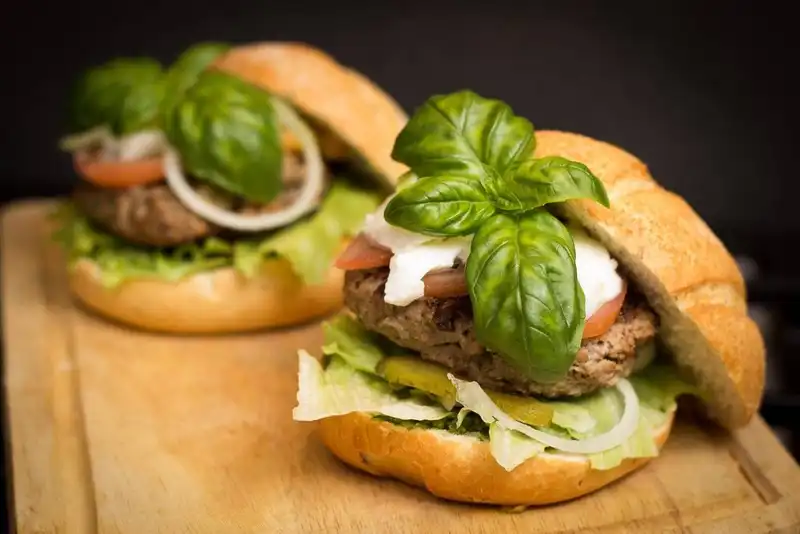
- Hamburger, ground beef, turkey, chicken, other poultry, veal, pork, lamb, and mixtures of these foods can be refrigerated for 1 to 2 days and frozen for 3 to 4 months.
6. Fresh beef, veal, lamb, and pork
- Steaks, chops, and roasts can be refrigerated for 3 to 5 days and frozen for 4 to 12 months.
- Fresh, uncured, and uncooked beef, veal, lamb, and pork can be refrigerated for 3 to 5 days and frozen for 6 months.
- Beef, veal, lamb, and pork can be refrigerated for 3 to 4 days and frozen for 3 to 4 months.
- Cured, cook-before-eating and uncooked beef, veal, lamb, and pork can be refrigerated for 5 to 7 days or until the "use by" date, and frozen for 3 to 4 months.
- Fully cooked, vacuum-sealed at the plant, and unopened; beef, veal, lamb, and pork can be refrigerated for 2 weeks or until the "use by" date, and frozen for 1 to 2 months.
- Cooked, pre-wrapped whole beef, veal, lamb, and pork can be refrigerated for 1 week and frozen for 1 to 2 months.
- Cooked, store-wrapped, slices, halves, or spiraled fresh beef, veal, lamb, and swine should be cut refrigerated for 3 to 5 days or frozen for 1 to 2 months.
7. Ham
- Cooked country ham should be stored in the refrigerator for up to a week or frozen for up to a month.
- Unopened canned goods marked "Keep Refrigerated" can be kept refrigerated for 6 to 9 months, but not frozen.
- Canned, shelf-stable, unsealed items can be refrigerated for 3 to 4 days and frozen for 1 to 2 months.
- Prosciutto, Parma, or serrano ham, dry Italian or Spanish kind can be refrigerated for 2 to 3 months and frozen for a month.
8. Fresh poultry
- Fresh fowl, such as chicken or turkey, can be refrigerated for 1 to 2 days or frozen for a year.
- Pieces of chicken or turkey can be refrigerated for 1 to 2 days or frozen for 9 months.
9. Fin Fish

- Fatty fish (bluefish, catfish, mackerel, mullet, salmon, tuna, and so on) can be frozen for 2-3 months; lean fish (cod, flounder, haddock, halibut, sole, and so on) can be frozen for 6-8 months; and lean fish (pollock, ocean perch, rockfish, and sea trout) can be frozen for 4-8 months. All of it, however, can be kept in the refrigerator for 2 to 3 months.
10. Shellfish
- Fresh crab meat and fresh lobster can be kept refrigerated for 2 to 4 days or frozen for 2-4 months.
- Live crab and lobster can be kept in the refrigerator for one day; live clams, mussels, oysters, and scallops can be kept in the refrigerator for 5-10 days but cannot be frozen.
- Shrimp and crayfish can be frozen for 6 to 18 months and can be refrigerated for 3 to 5 days.
- Squid may be frozen for 6-18 months and refrigerated for 1-3 days.
11. Eggs
- Raw eggs in their shells can be refrigerated for 3 to 5 weeks and should not be frozen directly. Combine the yolks and whites in a mixing bowl, then place in the freezer.
- Raw egg whites and yolks can be refrigerated for 2 to 4 days and frozen for up to 12 months (note- yolks do not freeze well).
- If chilled, a raw egg may become frozen in its shell. If frozen, use soon after thawing and then refrigerate to thaw.
- Refrigerate hard-cooked eggs and liquid egg substitutes for a week, but do not freeze.
- Refrigerate liquid egg substitutes for 3 days after opening, but do not freeze.
- Frozen egg substitutes that haven't been opened can be refrigerated after thawing, or according to the "use by" date. It can be stored for up to 12 months.
- Egg substitutes, frozen, opened can be refrigerated for 3-4 days after thawing, or according to the "use by" date, but do not freeze.
- Casseroles including eggs after baking, store in the refrigerator for 3 to 4 days or freeze for 2 to 3 months.
- Commercial eggnog can be refrigerated for 3 to 5 days or frozen for up to 6 months.
- Refrigerate homemade eggnog for 2 to 4 days, but do not freeze.
- Pumpkin or pecan pies refrigerate for 3 to 4 days after baking. Can be frozen for 1 to 2 months after baking.
- Custard and chiffon pies refrigerate for 3 to 4 days after baking but do not freeze.
- Quiche with filling after baking can be refrigerated for 3 to 5 days and frozen for 2 to 3 months.
12. Soups and stews
- Additions of vegetables or meat can be refrigerated for 3 to 4 days and frozen for 2 to 3 months.
13. Leftovers
- Cooked meat or poultry can be stored in the freezer for 2 to 6 months. Chicken nuggets or patties can be frozen for up to 3 months, and pizza for up to 2 months. They can all be stored in the refrigerator for 3-4 days.
Dangerous food safety mistakes
We want our families to be safe and healthy, yet even slight food handling and preparation errors can lead to catastrophic illness. Food poisoning can be caused by a little number of germs in raw food. Even a small amount of toxin-contaminated food can result in paralysis and, in the worst-case scenario, death.
Avoid these frequent food safety mistakes to keep your family safe.
1. Eating risky foods
Some people are predisposed to becoming ill and developing a more serious condition than others. This includes adults over the age of 65 who are eligible, as are children under the age of five. Pregnant women, people with health problems, and people who take medications that reduce the body's ability to resist infections and disease.
Those who are at high risk of food poisoning should avoid eating undercooked or raw animal products such as beef, poultry, turkey, eggs, or shellfish. Unpasteurized (raw) milk and juices, as well as soft cheeses, should be avoided unless they are labeled as made with pasteurized milk.
2. Not washing hands

Food can be contaminated by germs on your hands, making it unsafe to eat. As a result, proper handwashing with soap and running water for 20 seconds is required. Before, during, and after food preparation, eating, using the restroom, or changing a child's diaper, hands should be cleansed.
3. Washing meat, chicken, or turkey
Bacteria can spread to your sink, countertops, and other kitchen surfaces when you wash raw meat, poultry, turkey, or eggs. These viruses can spread to other foods, such as salads and fruit, causing you to become ill.
So, instead of washing pork, chicken, turkey, or eggs, fully cook them to kill germs.
4. Peeling fruits and vegetables without washing
Fruit and vegetable peelings and skins may contain germs. Germs are easily transferred to the interior of fruits and vegetables when they are cut or peeled.
This is why you should wash all fruits and vegetables under running water, even if you plan to peel them. Using a clean vegetable brush, scrub firm fruits and vegetables such as melons, avocados, and cucumbers.
5. Reusing plates without washing
Germs from raw meat can spread to cooked meat when cooked meat is placed on a dish that previously housed raw meat. As a result, take the initiative to serve raw and cooked meat on separate plates. The same restrictions apply to chicken, turkey, and seafood.
6. Not cooking thoroughly
It's a big mistake to not thoroughly cook beef, chicken, turkey, shellfish, or eggs. Cooked food is safe only once it has reached a temperature high enough to destroy bacteria. To ensure that food is cooked to a safe internal temperature, use a food thermometer.
7. Eating raw batter
It's a big error to eat raw batter or dough, including cookie dough, and other dishes made with raw eggs or wheat. Escherichia coli (E. coli), Salmonella, and other dangerous bacteria can be found in flour and raw eggs.
The remedy is to always properly cook or bake flour and eggs. Avoid meals like runny eggs, homemade mayonnaise, hollandaise sauce, and eggnog that include raw or undercooked eggs. Raw (uncooked) dough or batter containing flour or eggs should not be consumed. Keep all uncooked dough, especially play dough, away from children. After coming into contact with flour or raw dough, thoroughly wash your hands, work surfaces, and utensils.
8. Tasting or smelling food
The microorganisms that cause food poisoning can't be tasted, smelled, or seen. Even a small bit can make you quite sick. Rather than jeopardizing your health, see the storage times chart to determine how long you may safely store food. Throw it out when the timer runs out.
9. Thawing or marinating food on the counter
At room temperature, harmful germs proliferate swiftly. As a result, food should not be thawed on the kitchen counter.
It can be thawed in the fridge, in cold water, or the microwave. No matter what kind of marinade you use, always marinate food in the refrigerator.
10. Leaving food out too long
Harmful germs can proliferate if perishable goods are left out of the refrigerator for more than 2 hours (including beef, chicken, turkey, shellfish, eggs, sliced fruit, cooked rice, and leftovers).
So, if perishable items are exposed to a temperature of 90 degrees Fahrenheit or higher, place them in the refrigerator within 2 hours, or within 1 hour if the temperature is higher (like in a hot car). Roasts and large quantities of food, such as stew or chili pots, should be divided into smaller containers to allow them to cool quickly. Warm or hot food can be stored in the refrigerator if packaged in small enough portions to cool quickly.
Food safety by type of foods
Food poisoning and foodborne illness are more commonly related to certain foods than others. It's very crucial to manage these items correctly.
Here are some tips for keeping food safe and avoiding foodborne illness.
1. Meat
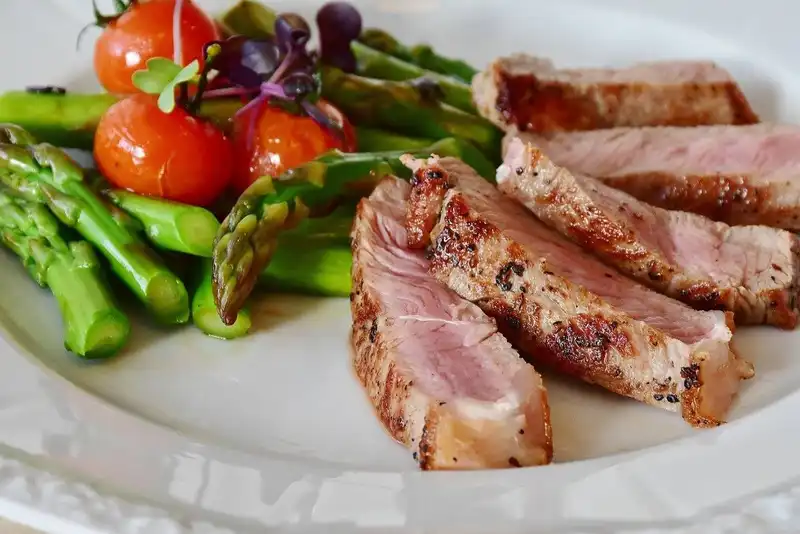
Parasites and germs can be found in raw meat. Although thorough cooking kills these hazardous germs, if meat is not handled and kept properly, it might become contaminated again.
2. Poultry
Bacteria such as Salmonella and Campylobacter can be found in raw poultry. Raw poultry should never be washed. To kill germs, cook the chicken to the proper temperature.
3. Seafood
In addition to being good for growth and development, a well-balanced meal that includes fish and shellfish is also great for heart health. Raw seafood can contain poisons like mercury or germs which will only be removed by boiling it to the right temperature.
4. Eggs and egg products
Eggs are one of nature's most nutritious and affordable foods, but they have to be handled with care. Even eggs with clean, unbroken shells can occasionally contain Salmonella. To prevent food poisoning, store them in the fridge and cook your eggs until the yolk is firm. Cook any egg-containing dish too!
5. Milk, cheese, and dairy products
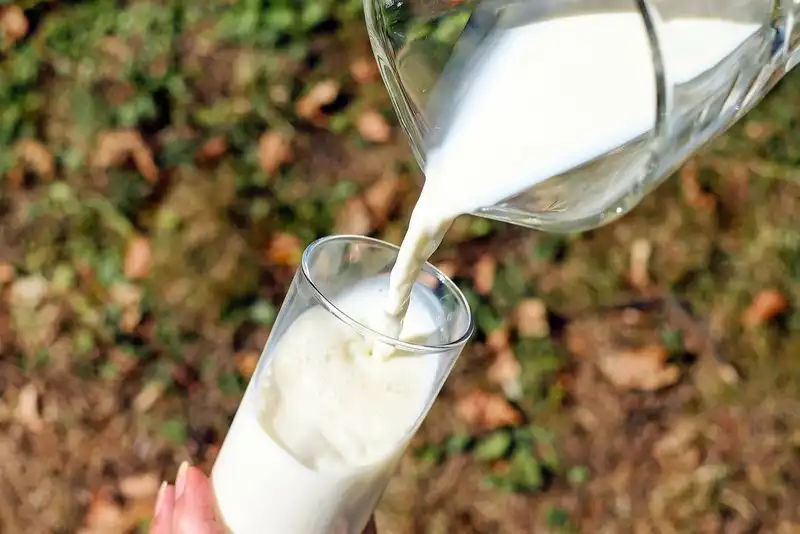
Raw milk can be dangerous and is a huge health risk. It carries harmful bacteria such as listeria, E. coli, and salmonella which can make you very sick- sometimes deadly so it's important to make sure that your milk has been pasteurized to kill those bad guys!
6. Fresh fruits, vegetables, and juices
From contaminated soil and water to a contaminated cutting board, dangerous germs can be picked up on fresh fruit. To kill microorganisms, fruit and vegetable juices must be treated.
7. Nuts, grains, and beans
A vast variety of foods contain nuts, grains, beans, and other legumes, as well as their by-products. Contamination or mislabeling of allergens can represent a widespread risk because these foods are used in so many goods.
8. Raw flour
Flour is a raw agricultural product that hasn't been treated with antimicrobials. When flour-based foods are cooked, bacteria are killed. As a result, you should never eat or drink raw dough or batter.
9. Baby food and infant formula
As their immune systems are not developed enough to fight infections, infants and young children are more prone to contract a foodborne illness. When handling and preparing their food and formula, use particular caution.
10. Pet food
Hazardous microorganisms or chemical toxins can be found in pet food. Both pets and people may become ill if the pet food is not handled properly. Keep small children and newborns away from areas where you feed your pets and never let them touch or ingest pet food.
Food safety in disaster or emergency
Prepare an emergency food supply chart ahead of time in case of a disaster or emergency. Because a calamity can disrupt the food supply, keep at least a three-day supply of food on hand.
In the event of a power outage, save items that have a long shelf life and require little or no cooking, water, or refrigeration. Meet the nutritional needs of infants, other family members on special diets, and pets. Extremely salty or spicy foods should be avoided since they increase the demand for drinking water, which may be scarce.
1. Storage of an Emergency Food Supply
When conserving food, it is not necessary to acquire dehydrated or other types of emergency food. Check the expiration dates on canned foods and dry mixtures. Home-canned food is usually discarded after a year, so use it up and replace it before it goes bad. Under specific storage circumstances, the shelf life of canned or dried goods can be extended. The optimal environment is cool, dry, and dark. The best temperature range is between 40 and 70 degrees Fahrenheit.
Items should be kept out of the way of stovetops and refrigerator exhaust vents. When exposed to heat, many foods decay more quickly. Because some foods absorb the odor of petroleum compounds such as gasoline, oil, paints, and solvents, food should be kept away from them.
Rats and insects should not be allowed access to food. Items in boxes or paper cartons will remain longer if they are tightly wrapped or stored in watertight, airtight containers. Food should be kept on shelves that are not in the flood zone.
2. Emergency water supply
Every day, keep at least 1 gallon of water on hand for each human and pet. Consider maintaining extra water than this in warmer locations, for pregnant women, and sick individuals. Keep a 3-day supply of water available for each human and pet. As far as possible, keep your emergency water supply away from flooding.
If bottled water has an odor, do not drink it or use it. Instead, toss it away or, if required, get a replacement from your bottled water supplier. Water purchased from a store has an expiration date, and other stored water should be changed every six months.
Have a bottle of unscented liquid household chlorine bleach on hand to disinfect your water and for regular cleaning and sanitizing. Store bleach in a room with a temperature of 70 degrees Fahrenheit on average (21 degrees Celsius). Because the amount of active chlorine in bleach decreases over time, consider replacing the container once a year.
3. Preparing for a power outage
An appliance thermometer in your refrigerator and freezer is a must. Make sure that the freezer is at or below 0 degrees Fahrenheit, and the refrigerator is at or below 40 degrees Fahrenheit. In the event of a power loss, the appliance thermometers will display the temperatures in the refrigerator and freezer, allowing you to determine whether the food is safe.
Buy or make ice cubes ahead of time, and freeze gel packs and water containers to keep food cold in the freezer, refrigerator, or coolers if the power goes out. All of them can be frozen and stored in the refrigerator or freezer for later use. Clean drinking water will be provided by the ice melting in the water containers. Any perishable items you won't use right away, such leftovers, milk, and fresh meat and poultry, should be frozen. This allows them to be kept at a safe temperature for a longer amount of time.
Similar goods should be grouped together in the freezer. As a result, the dinner will stay cooler for longer. Have coolers ready to keep perishable food cold if the power goes off for more than 4 hours. If you need dry ice or block ice, look about your area to discover where you can buy it.
Steps to food safety
Although the majority of healthy people recover quickly from a foodborne illness, others can suffer chronic, severe, or even life-threatening health problems. Pregnant women, young children, older adults, and persons with compromised immune systems are also at an increased risk of contracting foodborne illnesses. Follow these four simple procedures to keep your family safe from food poisoning-
1. Often wash your hands and surfaces
Before and after touching food, as well as after using the restroom, changing diapers, and handling pets, wash hands for at least 20 seconds with warm water and soap. Wash your cutting boards, dishes, utensils, and counters with hot soapy water after preparing each food item.
Consider using paper towels to wipe your kitchen surfaces. Cloth towels should be washed frequently on the hot cycle. Fresh fruits and vegetables should be rinsed under running tap water, including peels and rinds. Scrub them clean with a clean produce brush. Before opening canned goods, make sure the lids are clean.
2. Never cross contaminate
Separate raw meat, poultry, seafood, and eggs from other foods in your supermarket cart, grocery bags, and refrigerator. One cutting board should be used to slice fresh fruit, while another should be used to chop raw meat, poultry, and shellfish.
Cooked food should never be served on a plate that previously held raw meat, poultry, seafood, or eggs without being thoroughly cleaned in hot, soapy water. Bring marinades to a boil first if you've ever used them on raw foods.
3. Cook at the right temperature
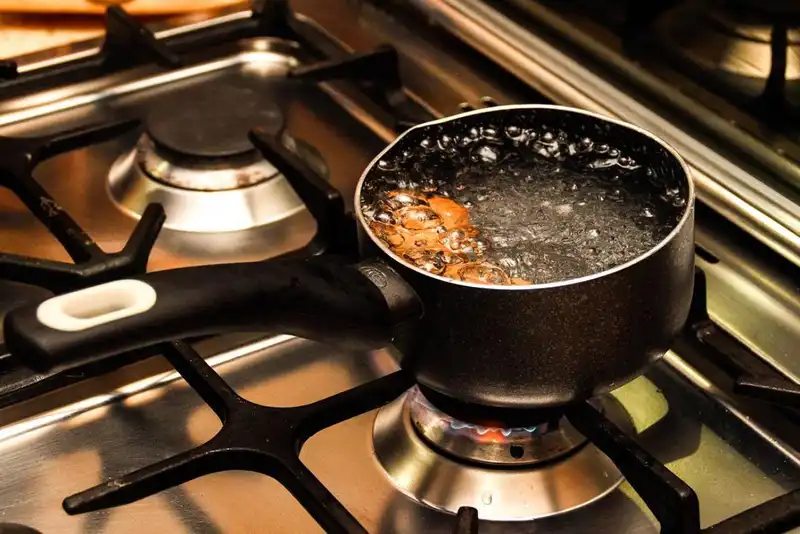
Color and texture are unreliable predictors of safety. A food thermometer is the only way to assure the safety of meat, poultry, seafood, and egg products cooked in any method. These foods must be cooked to a safe minimum internal temperature to kill any harmful microorganisms. Cook until the egg yolks and whites are firm. Only use eggs that have been properly cooked or are warm.
To guarantee even cooking in a microwave oven, cover, stir, and rotate the food. If you don't have a turntable, you can manually rotate the dish once or twice while it's cooking. Allow time for the cooking to finish before using a food thermometer to check the inside temperature. Bring sauces, soups, and gravies to room temperature before reheating.
4. Refrigerate and freeze food properly
Using an appliance thermometer, ensure that the temperature in the refrigerator is consistently 40 degrees Fahrenheit or below, and that the temperature in the freezer is 0 degrees Fahrenheit or lower.
Within 2 hours of cooking or purchasing meat, poultry, eggs, seafood, and other perishables refrigerate or freeze them. Refrigerate within 1 hour if the temperature outdoors is above 90 degrees Fahrenheit.
Food should never be left to thaw at room temperature or on the counter. Food can be defrosted in three ways- in the fridge, in cold water, or in the microwave. Prepare food that has been thawed in cold water or in the microwave as soon as feasible. Food should be marinated in the refrigerator at all times.
Make Zip Checklist your food safety partner
It's tough to keep track of all the chores you've completed in the kitchen, especially when it comes to food safety in a large restaurant kitchen. Zipchecklist will be your dependable companion in this situation.
By creating standard operating procedure checklists and updating sop templates, Zipchecklist can help you maintain a standard operating procedure in your kitchen and keep you and your employees up to date.
It also makes teamwork management easier, allowing you to view your task lists from any device and complete business responsibilities. The Zipchecklist Features include organizing daily, weekly, and monthly task lists by keeping track of shared task lists and adjusting them based on employee productivity data. This would eliminate the possibility of your restaurant's Food Safety protocol being overlooked.
Your phone's task management software keeps track of your to-do lists on a daily, weekly, and monthly basis and ensures that standard operating procedures are followed. This is how task manager notifications are sent. While on the road, it also maintains track of task assignments.
For further information or a free demo, please contact the Zipchecklist team.
Foodborne illnesses are a growing concern for many families
ZipChecklist will show you how to keep your family safe from foodborne illnesses by following a few simple steps
